COLORADO’S MOST ENDANGERED PLACES
Issue No. 28





Colorado’s Most Endangered Places Program 2025 Published Annually • Issue No. 28
This project was paid for in part by a History Colorado State Historical Fund

Issue No. 28





Colorado’s Most Endangered Places Program 2025 Published Annually • Issue No. 28
This project was paid for in part by a History Colorado State Historical Fund
“Preservation is in the business of saving communities and the values they embody.”
- Richard Moe
It is places as large as the Colorado Capitol Building in Denver or as small as the Feminilas Building in El Rito. It is businesses as large as the Stanley Hotel in Estes Park or your local, family-owned Bed and Breakfast along Main Street. Every place has a story to tell, and our purpose at CPI is to relay those histories to the public and preserve them for future generations.
For 28 years, Colorado’s Most Endangered Places Program has partnered with state and local leaders, city planners, organizations, and individuals like you to protect and preserve the places that continue to be fundamental resources in communities large and small, rural and urban, and affluent and destitute. Throughout our history, we have strived to remember, celebrate, and honor Colorado’s heritage by identifying and preserving not only physical landmarks but also intangible cultural elements like language, storytelling, music, and other community practices that embody our past and connect us to our future.
SPONSORS:



The four resources selected for Colorado’s Most Endangered Places this year are integral to their community’s history, traditions, and culture. As you read about the Indiana Jones Bed & Breakfast, Knearl Block and Opera House, Newman Block, and Red Cliff Town Hall, please consider getting involved in your own community to protect and preserve its heritage and history.
Thank you for being an exceptional supporter of our program! Katie

Peterson


For over 40 years, Colorado Preservation, Inc. (CPI) has been steadfast in its mission to advance historic preservation across our state through advocacy, education, outreach, and preservation services. Our vision is to inspire citizens statewide to honor and protect their heritage, build a sustainable future with historic places, and prioritize the past as a legacy.
One signature initiative of the organization is a program known as Colorado’s Most Endangered Places (EPP), which CPI established in 1997. This initiative identifies and advocates for the preservation of historic buildings, landscapes, heritage landscapes, and archaeological sites at risk of being lost. Over the past 28 years, EPP has highlighted 144 historic resources throughout Colorado, with 57 successfully saved and only nine lost. Through this program, CPI brings awareness and technical assistance to communities working to save important historic resources statewide.
The success of EPP is a testament to the collaborative efforts of communities, local governments, and dedicated individuals who recognize the value of adapting and revitalizing previously underutilized historic resources. Working with its community partners, CPI has been impactful in bringing attention and building local capacity to save listed endangered resources. Our work spans every region of the state and through the listed resources reflects the diverse and rich history of the state.

EPP is deeply intertwined with the broader mission of CPI and allows the organization to work with communities directly. Listing often serves as a catalyst for community engagement, spurs economic revitalization, and reinforces the importance of preservation within the context of threatened resources. This program provides case studies that serve as examples for addressing similar threats across the state.
As we look to the future, CPI remains committed to fostering inclusivity and diversity in historic preservation. We strive to tell the stories of underrepresented communities through the preservation of Colorado's historic landscapes and sites, ensuring that our collective heritage is honored and protected for generations to come.
Let these stories of the newly listed Endangered Resources introduce you to our broader organization. I encourage you to get to know our organization further, whether by attending one of our events, volunteering your time, or simply exploring the incredible stories of the places we’re working to save. Know that CPI is a resource available to all residents and visitors and together, we can continue to build a future enriched by the enduring legacy of our past.

Jennifer Orrigo Charles Executive Director CPI


Do you know of a threatened historic building or resource in Colorado needing assistance? Nominate it to be one of Colorado’s Most Endangered Places today!
Nominations are accepted year-round. To be considered for the 2026 list, submit applications before July 7th, 2025, 5 p.m.
“THE INDIANA JONES BED AND BREAKFAST...IS RENOWNED FOR ITS ROLE IN PRESERVING LOCAL HERITAGE AND TOURISM IN ITS COMMUNITY. LOCATED IN A SMALL, ECONOMICALLY STRUGGLING TOWN, THIS BED AND BREAKFAST NOT ONLY SERVES AS A PIECE OF CINEMATIC HISTORY BUT ALSO PLAYS A CRUCIAL ROLE IN SUSTAINING LOCAL TOURISM.”
Nicole and Lawrence Atencio Dispensary 7884
Imagine this: It’s a crisp morning in 1988 in the quiet town of Antonito, nestled in Colorado’s San Luis Valley. Residents step outside to an unexpected sight—cameras rolling, actors rehearsing, lights flashing, and crews bustling around town. Hollywood had arrived to transform Antonito into the backdrop for what would become one of the most iconic films of the 20th century.
The opening scenes of Indiana Jones and the Last Crusade were filmed right here, with the action centered on the historic Cumbres & Toltec Railroad and the charming Victorian building at 502 Front Street, now known as the Indiana Jones Bed & Breakfast.
Built in 1888, Indiana Jones' boyhood residence was originally the Carroll family home and one of the first houses constructed in Antonito. The Carrolls moved to the
area to support local miners and ran a business selling horses and mules. Over the years, the house has remained privately owned, with the current owner acquiring it in 2017 and transforming it into a charming bed and breakfast. Guests can stay in one of three cozy upstairs bedrooms and explore a fascinating museum on the main floor dedicated to Indiana Jones and the rich local history of Antonito and the San Luis Valley.
Unfortunately, the foundation of the home is failing, and the building is beginning to sag and shift. Nevertheless, the 136-year-old adobe home retains most of its historic integrity, with small repairs made as needed. However, all rehabilitation rests on the need for a new, solid foundation before work on the windows and stucco can begin.
CPI is excited to work with the current owner and other partners to spotlight the rich cinematic history tied to Colorado, particularly through this iconic site. The Indiana Jones Bed & Breakfast offers a unique opportunity to celebrate the intersection of movie history and heritage preservation. By leveraging this significance, CPI hopes to help secure funding for restoration efforts, ensuring the home’s historic charm and cultural relevance endure for generations.


“THE DESKY MOTEL/CORRAL SPORTS BAR IS NOT JUST A BUILDING; IT IS A SYMBOL OF THE RESILIENCE AND ENDURING SPIRIT OF BRUSH. ITS PRESERVATION IS CRUCIAL TO MAINTAINING THE CHARACTER AND HISTORICAL INTEGRITY OF OUR MAIN STREET DISTRICT.”
MaKyle Mares Executive Director, Brush! Area Chamber of Commerce
A post office, hatmaking factory, hotel, restaurant, opera house, bank, bar, and telephone exchange - oh my!
Nestled in the heart of Main Street in Brush, the Knearl Block and Opera House embodies the multifaceted use of buildings in Eastern Colorado communities. Since its construction in 1902, this downtown Brush building has served many purposes as a hub of social interaction, local commerce, and cultural identity.
Named after William H. “Billy” Knearl, a prominent businessman and leader in early Brush history, this Main Street building’s architecture reflects the grandeur of its era. With its intricate brickwork, tall windows, and timeless facade, the building captures the elegance of early 1900s design. The unique “Desky Hotel” sign is a rare example of the lighted blue enamel sign and one of two recorded on buildings in Colorado.
Originally a bustling hub of commerce and culture, the Knearl Block housed a mercantile store on its first floor, while the second floor became home to the famed

Opera House. This space hosted lively performances, gatherings, and events, making the building the cultural heart of Brush. Over the decades, the building transitioned through various roles, from serving as a hotel—including its time as the iconic Desky Hotel and later the Cattleman’s Inn—to becoming a beloved sports bar and community meeting spot.
Today, the Knearl Block and Opera House is privately owned and operates as the Corral Sports Bar & Grill, a business that has remained in the building since December 2003. The owner has taken as many steps as possible to stabilize the building using available funds. Unfortunately, time has taken its toll on the building, rendering the upper story unusable and the south wall beginning to detach. However, the current owner continues to be dedicated to preserving the building and keeping it a vibrant community hub by providing space for large events. It recently celebrated its addition to the State Register of Historic Places.
CPI is excited to partner with the building owner, Colorado DoLA Main Street, the Brush Historic Preservation Commission, and Brush! Area Chamber of Commerce to stabilize and rehabilitate the Knearl Block and Opera House to serve as a model for preserving historic Main Streets and boosting economic vitality in small Eastern Plains communities.


“MUCH CAN BE LEARNED ABOUT THESE BUILDINGS AND HOW GRANADA INTERACTED WITH THE JAPANESE AMERICANS INTERRED AT AMACHE.”
Eric Leonard High Plains Group Superintendent, National Park Service
President Franklin D. Roosevelt issued Executive Order #9066, which authorized the U.S. military to forcibly remove all citizens of Japanese descent and place them in internment centers. Amache, located in southeastern Colorado, was one of ten internment locations that held Japanese Americans during the war. Due to its proximity to the small town of Granada, the incarcerated individuals at Amache frequently interacted with local townspeople. A key location for this interaction was the Newman Block, which housed the Granada Fish Market and Newman’s Drug Store.
Newman’s Drug Store, the larger of the two buildings, was originally constructed around 1914. In 1942, pharmacist Ed Newman recognized the need for a larger business in town and purchased the building. He moved his pharmacy into the space, dug a well, added a soda fountain, and opened a newsstand. As Japanese Americans at Amache sought work outside the camp, Newman employed many at his store. He also sponsored sports teams inside Amache, providing uniforms and trophies.
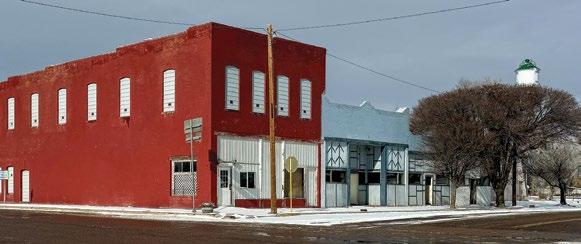
Next door to Newman’s Drug Store is a smaller blue building that housed the Granada Fish Market. Frank Masa Tsuchiya, who had been incarcerated at Amache, previously owned a wholesale fish market in Los Angeles before being sent to the camp. After his release on May 11, 1943, Tsuchiya moved just over a mile to Granada, where he quickly opened the Granada Fish Market. He worked alongside Frank Torizawa, who had also worked in a fish market before the war. Together, they delivered fish, poultry, and ice to those still incarcerated at Amache.
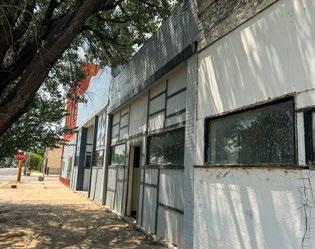
Beyond providing goods, the Granada Fish Market also donated various items to improve the lives of those behind barbed wire. The Granada Pioneer newspaper published short articles thanking Tsuchiya for his generous contributions, such as Christmas trees and poultry.
Today, the Newman Building is used as a rental event space and retains much of its exterior historic integrity. The Fish Market is currently vacant. Attention was drawn to the structures when one of the four buildings that share walls collapsed. CPI is excited to collaborate with the private owners, the Amache Alliance, the Amache Preservation Society, and the National Park Service to explore future uses for these buildings and highlighting the local underrepresented history, all while supporting the small local economy of Granada.

“THE RED CLIFF TOWN HALL AND FIREHOUSE IS NOT JUST SIGNIFICANT TO OUR TOWN BUT IS A VALUABLE PIECE OF COLORADO’S BROADER HISTORICAL NARRATIVE...PRESERVING THIS BUILDING IS NOT JUST ABOUT MAINTAINING A STRUCTURE; IT IS ABOUT SAFEGUARDING THE STORIES, MEMORIES, AND IDENTITY OF A COMMUNITY THAT HAS PLAYED A VITAL ROLE IN THE STATE’S HISTORY.”
Lorenzo Sandoval Red Cliff Resident
Set against the stunning backdrop of the Rocky Mountains, the small community of Red Cliff is nestled within the White River National Forest. Known for its abundant outdoor recreation opportunities, including hiking, fishing, biking, and cross-country skiing, Red Cliff offers both natural beauty and adventure. On Main Street, the historic Town Hall and Firehouse stand as enduring symbols of the town’s rich heritage and remain central to its community life.
Constructed around 1887, the Red Cliff Old Town Hall and Firehouse serve as a testament to the early mining days in the Battle Mountain Mining District. After fires in 1882 and 1883 that destroyed most of the town, residents realized the need for a better system to help fight fires. In 1887, the town constructed an underground pipe water system, and water from nearby Willow Creek flowed to four hydrants along the main streets. The Town Hall and Firehouse was constructed later to house the town’s fire and political activities, and the upstairs was used as a dance hall in the 1930s. A concrete jail was constructed in the rear around 1937.
The Red Cliff Old Town Hall and Firehouse served the community for almost 90 years. After a brief stint as a
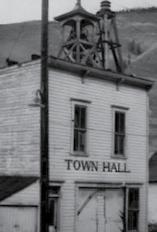
daycare in 1974, the building closed in 1980 and has been vacant since. Unfortunately, the building is in failing condition and not structurally sound. Rotting wood and a sloping foundation contribute to the building’s decline. However, a recent Historic Structure Assessment completed in 2023 identifies the necessary steps needed to stabilize the building to begin the process of turning the building into a museum that spotlights the history of Red Cliff and the Battle Mountain Mining District, Summit and Eagle Counties, and ultimately the early development of the mountain region of Colorado.
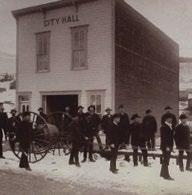
CPI is eager to partner with the Town of Red Cliff, the Eagle County Historical Society, the Friends of Red Cliff, and the Department of Local Affairs to preserve the building and highlight and reinforce the town’s sense of community pride and heritage.

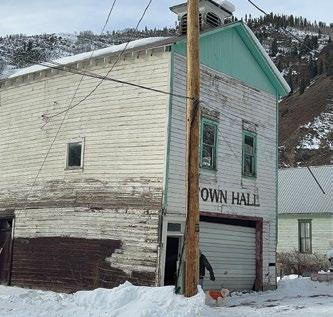

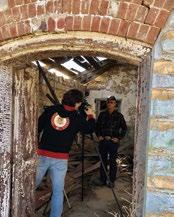
Kevin Strong, Producer
For over 20 years, CPI has worked with CBS Colorado producer Kevin Strong and his talented crew of photographers to bring Colorado’s Most Endangered Places to life, capturing through dynamic videos the stories, historic beauty, and diversity of the state’s threatened and endangered resources. Filmed interviews with local supporters take place in all kinds of weather – from hot and dry to freezing cold – and are edited and produced to be premiered at CPI’s annual Saving Places Conference in January/February. The individual videos become part of a 30-minute special on the Endangered Places Program airing each spring on CBS Colorado.
Local supporters note the impact these videos have in bringing attention and publicity to their preservation efforts in saving their listed resources. Each mini-documentary demonstrates to the larger public the importance of historic preservation, highlighting why these places matter and the stories of those committed to saving them for the future.
CBS Colorado’s meteorologist
Dave Aguilera serves as the host of the 2025 Most Endangered Places Announcement at the annual Saving Places Conference and on the 30-minute special. Aguilera is a Colorado native, born and raised in Pueblo, and has covered weather and news across the state.

Dave Aguilera
CPI is grateful to CBS Colorado and the team dedicated to promoting these important resources statewide.
Volunteers, donors, sponsors, and partners are vital to CPI’s Endangered Places Program and preserving historic resources statewide. Alpine Bank and Deep Roots Craftsmen proudly sponsor the 2025 Endangered Places Workshops, where volunteers of all skill levels can work directly with threatened resources. Guided by professionals, these workshops teach preservation trades while saving pieces of Colorado’s history.

In 2024, volunteers had the unique opportunity to explore adobe construction techniques through hands-on workshops at the Kit Carson Museum Complex in Bent County, the Iglesia de San Pedro y San Pablo in Costilla County, and the Feminilas Building in Costilla County. Led by Natural Dwelling, LLC, participants worked to remove cementitious stucco and prepared traditional mud mixes to apply authentic adobe finishes. At the Feminilas Building, with support from Deep Roots Craftsmen, volunteers also contributed to installing a temporary roof, providing the structure with additional protection and time for preservation efforts.
This past year, CPI also partnered with volunteers from History Jeffco, Conifer Historical Society & Museum, and the Jefferson County Historical Commission to paint plywood pieces to look like the original historic windows of the South Platte Hotel in southern Jefferson County. When Deep Roots Craftsmen applied them to the building in June 2024, it breathed new life into the hotel and showcased the love and care the community has for this landmark.
Interested in participating in a future Weekend Workshop?
Become a member of CPI and check our social media and website for upcoming workshop opportunities!
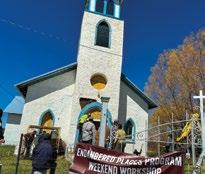
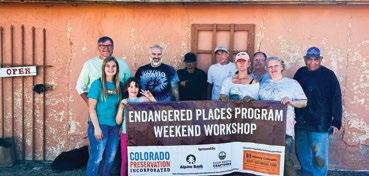


CPI is a nonprofit organization dedicated to preserving and protecting historic places that represent Colorado’s diverse heritage. Historic preservation is more than saving old buildings— at its core, preservation connects people to place, fosters community pride, and ensures the landmarks that shape our communities remain relevant.
Preservation fosters a sense of community identity and supports local economies through tourism, investment, and revitalization.
Since 1984, CPI has been a trusted resource for individuals, communities, and organizations working to preserve Colorado’s historic places. CPI advocates for preservation in addition to offering technical assistance and educational opportunities to the public. CPI works with private property owners, nonprofit organizations, local governments, consultants, and professionals working with historic resources. Through our Endangered Places Program, we support the state’s most at-risk historic resources, bringing awareness, identifying funding opportunities, and providing technical assistance to help save these threatened places.
CPI is more than a preservation organization—we partner and advocate for communities across Colorado. Whether helping to restore a local landmark, bringing attention to an underutilized resource, or showcasing the benefits of preservation, we empower people to see the value of their history and the potential to adapt it to meet current needs. CPI’s impact spans statewide from small towns to urban centers and includes protecting archeological sites, heritage landscapes, places of agriculture and industry, and places of entertainment and religion.
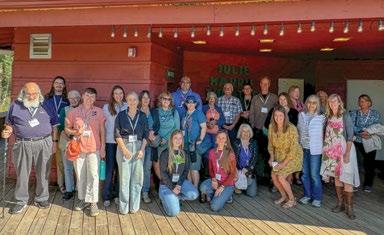
Whether you are passionate about saving a specific place, want to learn more about Colorado’s history, or seek resources to start your preservation journey, CPI is here for YOU.
Learn more about CPI’s services and the places we are impacting statewide at coloradopreservation.org
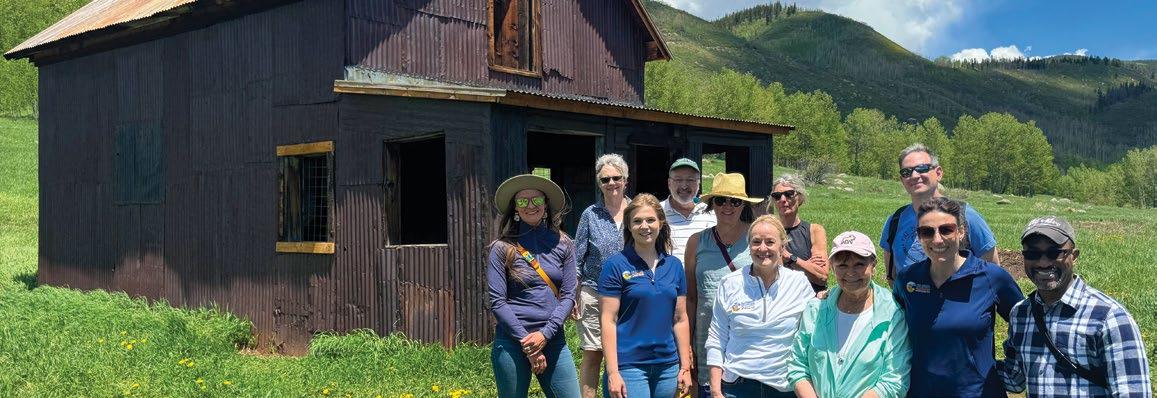

Each year, CPI works in communities across the state, but we need supporters like YOU to make a difference. Interested in learning more about our organization? We have many ways for you to get engaged. Place is best experienced in person, and CPI offers adventures throughout the year that encourage you to interact with Colorado’s diverse heritage.

CPI looks to volunteers to support mission-critical activities, including our Saving Places Conference, Endangered Places Program, and Preservation Services department. Contact CPI to let us know your skills and what would be of interest to you. Endangered Places Program volunteers include professionals willing to donate time towards a specific place or those looking to offer assistance with the program overall. Become a Member of CPI and make sure you are up-to-date on upcoming offerings by signing up for our newsletter through the CPI website.
CPI members are the heart of our organization and ensure our mission-critical work continues. Members receive special benefits, including reduced conference and event pricing and early notification of rare behind-the-scenes tours. Every membership dollar supports mission activities and leads to the protection of Colorado’s unique heritage.
Learn the latest techniques, best practices, and historic preservation solutions to use in your own community by attending one of CPI’s Saving Places Conferences. You can expect over 50 sessions and tours while networking with over 700 attendees with diverse professional backgrounds. The conference, typically held in January/February in the Denver Metro region, has grown to become the largest statewide preservation conference (second nationwide only to the National Trust Conference). On the Road is a two-day event that travels the state featuring behind-the-scenes tours of heritage sites. Check our website or savingplacesconference.org for the latest conference information.
™
Make the stories behind the places we love easy and fun to experience with the FactorEarth Explore virtual reality mobile app.


Do you have a historic resource in need of assistance? Are you looking for more information on skilled preservation contractors? Would you like to explore funding opportunities and more information on phasing your project? CPI’s Preservation Services Director can help! CPI offers services in grant writing, project management, and consultation. Contact Kelly Clark to discuss your project at kclark@coloradopreservation.org
Do you own a historic building that is at least 30 years or older that you plan to rehabilitate into an income-generating property? Colorado’s Historic Preservation Tax Credits may be an opportunity for you to explore. Federal and state tax laws provide tax incentives for qualifying historic preservation projects. These credits allow taxpayers to reduce, on a dollar-for-dollar basis, the amount of income tax they owe to the government (or they can choose to sell awarded credits). The amount of credit that can be obtained is calculated as a percentage of the overall rehabilitation costs associated with the project.
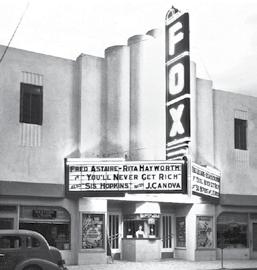
• 20% federal tax credit for the rehabilitation of certified historic buildings used for income-producing purposes
• 20%–35% state tax credit for the rehabilitation of historic, owner-occupied residences
• 20%–35% state tax credit for the rehabilitation of historic buildings used for income-producing purposes
CPI is offering tax credit application services to assist property owners and organizations explore this redevelopment option. Interested in learning more and if your project could qualify? Contact CPI’s Tax Credit Consultant, Kate McCoy, at kmccoy@coloradopreservation.org

4 Bar 4 Ranch (2014), Grand County
Amache Internment Site (2001), Prowers County
Beaumont Home (2004), Pueblo County
Bradford Perley House (2002), Jefferson County
Chimney Rock
National Monument (2008), Archuleta County
City Ditch (2003), Douglas, Arapahoe, & Denver Counties
Civic Center (2007), Denver County
Colona School & Grange (2006), Ouray County
Colorado Capitol Dome (2010), Denver County
Como Depot (2006), Park County
Cripple Creek (1998), Teller County
Crossan’s Market (2012), Routt County
Daniels Schoolhouse (2006), Weld County
Denver & Rio Grande
Antonito Depot (2007), Conejos County
`Downtown Greeley (2000), Weld County
Durango Power House (2001), La Plata County
El Corazon de Trinidad Distinctive Commercial District (2000), Las Animas County
Emma Store (2000), Pitkin County
Evans School (2000), Denver County
Georgetown School (2006), Clear Creek County
Gold Medal Orchard (2015), Montezuma County
Goodnight Barn (2002), Pueblo County
Grandview Terrace Neighborhood (1999), Boulder County
Grant Avenue
Church & Community Center (2002), Denver County
Greeley, Salt Lake and Pacific RR Grade-Stout Branch (2009), Larimer County
Hahn’s Peak Fire Lookout (2014), Routt County
Handy Chapel (2011), Mesa County
Hanger 61 (2005), Denver County
Hanging Flume (1999), Montrose County
Hugo Roundhouse (2002), Lincoln County
Hutchinson Homestead & Ranch (2003), Chaffee County
Kennedy/Mancos Grain Elevator (2013), Montezuma County
Lewis Mill (1998), San Miguel County
Lime Kilns (2001), Pitkin County
Manitou Springs Spa (2000), El Paso County
McElmo Creek Flume (2011), Montezuma County
Native American
Arboreal Wickiup Sites (2003), Statewide
Original Gold Hill Townsite (2000), Boulder County
Paris Mill (2004), Park County
Pillars of P.O.W. Camp 202 (2005), Weld County
Preston Farm (1998), Larimer County
R&R Market (2019), Costilla County
Ralston Cemetery (2011), Jefferson County
Red Mountain Mining District (1999), Ouray & San Miguel Counties
Redstone Castle (2004), Pitkin County
Reiling Gold Dredge (2015), Summit County
Rialto Theatre (2008), Alamosa County
Rock Creek Stage Stop (2000), Routt County
San Rafael Church (2001), Conejos County
Satank Bridge (2003), Garfield County
Shield Rock Art Site (2001), Rio Blanco County
Studzinski Block (2001), Pueblo County
Sullivan Gateway (2012), Denver County

Sundial Plaza/ Cranmer Park (2013), Denver County
Toltec Hotel (1998), Las Animas County
Windsor Mill (2002), Weld County (with nod to historic form)
Adobe Barns of San Luis Valley (2019), Alamosa, Conejos, Costilla & Rio Grande Counties
Alta Lakes (2000), San Miguel County
Antelope Springs
Methodist Episcopal Church (2020), Morgan County
Arkansas Valley Fairground Adobe Stables (2007), Otero County
Belvidere Theater (2016), Gilpin County
Centre Avenue (2017), Weld County
Central City (1998), Gilpin County
Central Platoon School (2012), Morgan County
Colorado Fuel & Iron Plant-Museum (1999), Pueblo County
Commodore Mining District (2006), Mineral County
Costilla County Mission Churches (2024), Costilla County
Dearfield Farming Colony (1999), Weld County
Deputy Warden’s House (2011), Fremont County
Downtown Underground (2018), Statewide
Doyle Settlement (2018), Pueblo County
East Portal Camp Cabins (2020), Gilpin County
Far View Center (2023), Montezuma County
Feminilas Building (2023), Costilla County


Fort Lyon (2013), Bent County
Fourth Street
Commercial District, Saguache (2009), Saguache County
Foxton Post Office (2002), Jefferson County
Fruita Bridge (2002), Mesa County
Garcia School (2023), Costilla County
Gianella Building (2004), Las Animas County
Glen Huntington Bandshell (2016), Boulder County
Grand Junction Depot (2010), Mesa County
Historic Bridges of Colorado (2021), Statewide
Historic Eastside Neighborhood (2012), Pueblo County
Historic I-70
Mountain Corridor Communities (2005), Clear Creek ountyHomesteading Resources of Escalante Canyon (2013), Delta County
Hose Co. No. 3 Fire Museum (2019), Pueblo County
Hotchkiss Barn (2013), Delta County
Iglesia de San Antonio/Tiffany Catholic Church (2019), La Plata County
InterLaken Resort (2001), Lake County
Kit Carson Museum Complex (2024), Bent County
Koch Homestead (2023), Pitkin County
Lafayette Head Home & Ute Indian Agency (2021), Conejos County
Leadville Mining District (1998), Lake County
McLaughlin Building (2007), Pueblo County
Mid-Century Resources of Littleton Boulevard (2014), Arapahoe County
Moffat Road/Hill Road (2012), Rural Boulder, Grand, and Gilpin Counties
Neon Signs of Colfax (2014), Denver County
Outbuildings of Lake City (2010), Hinsdale County
Salida Opera House (2011), Chaffee County
Silver Dollar Saloon (2008), Teller County
Snowstorm Gold Dredge (2001), Park County
Soldiers & Sailors Home (2005), Rio Grande County
Stranges Grocery (2001), Mesa County
Tabor Opera House (2016), Lake County
Tarryall-Cline Ranch (2018), Park County
Temple Aaron (2017), Las Animas County
Ute Ulay Mill & Town site (2015), Hinsdale County
World’s Wonder View Tower (2017), Lincoln County
Bent County High School (2004), Bent County
Black Hawk (1998), Gilpin County
Brown’s Sheep Camp (2010), Las Animas County
Colorado Fuel & Iron Plant-Industrial Plant (1999), Pueblo County
Knearl Block and Opera House, Morgan County (2025)
Elk Creek Barn & Octagon at Shaffer’s Crossing (2018), Jefferson County
Elkhorn Lodge (2010), Larimer County
Hispanic Cultural Landscapes of the Purgatoire River Valley (1998), Las Animas County
Indiana Jones Bed & Breakfast, Conejos County (2025)
Isis Theatre (2020), Teller County
Lizzy Knight’s Cabin (2012), Rural Dolores County
McIntire Ranch and Mansion (2019), Conejos County
Montoya Ranch (2014), Huerfano County
Newman Block, Prowers County (2025)
Red Cliff Town Hall, Eagle County (2025)
Riverside Cemetery (2008), Denver and Adams Counties

Santa Fe Trail & Southeast Heritage Region (2007), Baca, Bent, Las Animas & Otero Counties
South Platte Hotel (2023), Jefferson County
Southern Ute Boarding School
Campus-Southern Ute Reservation (2020), La Plata County
Union Pacific Pumphouse (2005), Cheyenne County Valmont School (2024), Boulder County
Victor Bowling Alley (2024), Teller County
Walsenburg Power Plant (2009), Huerfano County
Winter Park Balcony House (2021), Grand County
Zuni Steam Power Plant (2024), Denver County
Christian Science Church (1998), Teller County
Columbian Elementary School (2004), Bent County
Craig Depot (2008), Moffat County
Currigan Exhibition Hall (2000), Denver County
Given Institute (2011), Pitkin County
Great Western Sugar Factory (2016), Adams County
Kit Carson Hotel (2003), Otero County
Sixteenth Street Mall (2009), Denver County
Willowcroft Manor & Farm (2010), Arapahoe County
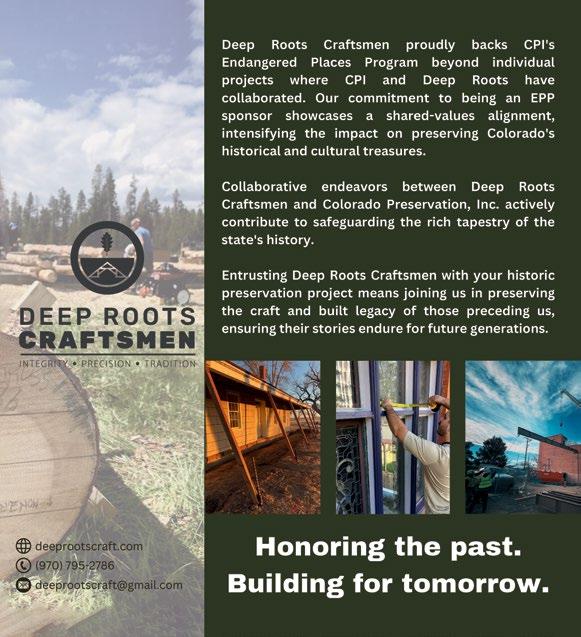
@coloradopreservation

P 303.893.4260
@coloradopreservation
facebook.com/coloradopreservation
Colorado Preservation, Inc. Board of Directors
Michael Gayle Denver
Elizabeth Kellums Greeley
Natasha Krasnow Grand Junction
James Kroll* Secretary, Denver
Dave Lively Grand Lake
Mary Jane Loevlie Idaho Springs
Greg Movesian* Treasurer, Denver
* Signifies CPI’s Executive Committee
Ann Mullins* Western Slope VP, Aspen
Sandy Ortega San Luis
Jeff Owsley Alamosa
Meg Touborg* Denver
Steve Turner Denver
Jane Watkins Vice Chair, Denver
Tom Witt* Board Chair, Denver
Colorado Preservation, Inc. Staff
Jennifer Orrigo Charles, Executive Director jorrigocharles@coloradopreservation.org
Katie Peterson, Endangered Places Program Director kpeterson@coloradopreservation.org
Kelly Clark, Preservation Services Director kclark@coloradopreservation.org
Stephanie Bakken, Events and Development Director sbakken@coloradopreservation.org 1420 Ogden Street Suite 104 Denver, CO 80218